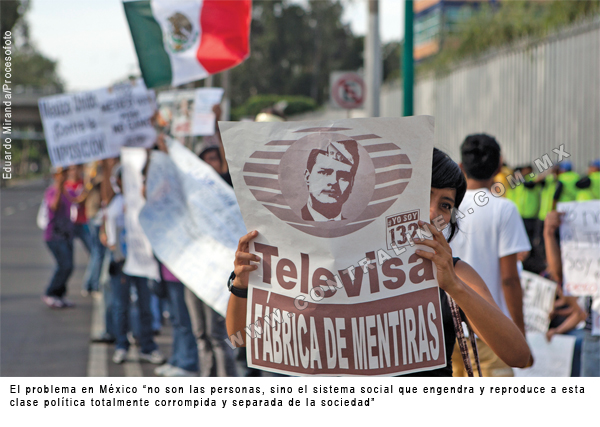5.2 Global Challenges in Everyday Life
4 min read•june 18, 2024
Isabela Padilha
B
Brittany Schwikert
AP Spanish Language 🇪🇸
54 resourcesSee Units
As we navigate through this life, there are mechanisms and systems that were created to help us process and deal with global challenges. For example, religion 🙏 is set of beliefs that aim to respond to challenges of the mundane world. In addition to religion philosophical thought 💭 and awareness 📣 are important aspects in defining our ability to combat problems in our contemporary world.
In the next section we will explore Education as one of the main tools that develops awareness and understanding of global challenges. 🌍 Education is a liberating mechanism that consists, not only of the gathering of information, but also encourages the adoption of critical lenses that can elaborate our understanding of issues. Increasing access to education has been one of the main objectives in Latin American nations as they want to increase the knowledge capital of its population and develop more efficiency this way.
Education
As of 2019, Mexico holds the largest population of all Spanish-speaking countries. Let’s take a deep dive into their education system and later compare it to ours in the United States. In Mexico, basic education is divided into three levels: primary (ages 6-12), junior high (ages 12-15), and high school (ages 15-18). Throughout all three levels of schooling, attendance is mandatory. Public schools in Mexico are free for all citizens, but at times can be underfunded and lacking in resources. For that reason, private and international schools are available as well.

Educational Stages
- Nursery School (Preescolar) 👶
- 3 years of nursery school
- Ages 3-5
- The 3rd year is equivalent to Kindergarten in the USA
- Primary School (Escuela primaria) 🧒
- 6 years of primary school
- Ages 6-12
- Organized by grade level: primero, segundo, tercero, cuarto, quinto, sexto
- Usually 4 hours long, with some schools offering a morning sessions (el matutino) or an afternoon session (el vespertino)
- Middle School (Secundaria) 🧒
- 3 years of middle schools
- Ages 12-16
- Organized by grade level: séptimo, octavo, noveno
- High School (Bachillerato / Preparatoria) 🧑
- 3 years of high school
- Ages 15-18
- Organized by grade level: décimo, undécimo, duodécimo
- Two types of high schools
- Bachillerato
- 2 or 3 years
- Provides vocational training to become a skilled work
- Ex: accountant, technician, secretary
- Preparatoria
- 3 years
- Divided into 6 semesters, latter semesters include some degree of specialization in sciences or social sciences
- Prepares the student to continue studying at a university
- University (Universidad) 👩🎓
- Undergraduate studies are usually around 4 years and divided into semesters or quarters
- Mexico offers similar educational degrees to USA
- 4 year Bachelor degree - Licenciatura
- 2 year Master’s degree - Maestría
- 3 year Doctoral degree - Doctorado
México vs. USA: Education Edition 🇲🇽🇺🇸
- Schedule (horario escolar) 🗓️
- 🇲🇽 Students in Mexico go to school for 4 hours each day, with some schools having 2 school sessions of either in the morning or in late afternoon
- 🇺🇸 Students in the US go to school for around 7 hours each day
- Grading (sistema de calificación) 💯
- 🇲🇽 Grades are given on a 1 to 10 scale. Students who score less than a 6 are retained for the next school year.
- 🇺🇸Grades are given on the A, B, C, D, and F scale. Students who score less than D are retained for the next school year.
- Relationships between teachers and students (relaciones entre maestros y edustiantes) 👩🏫 👨🎓
- 🇲🇽Student-teacher relationships are more formal in Mexico, students are expected to show respect and there is less interaction between students and their teachers outside of school
- 🇺🇸Teachers and students tend to have very close relationships due to the abundance of clubs and school wide activities
Education and Social Activism
As a response to global and national challenges, the Mexican population has engaged in several different forms of activism. One example is the #YoSoy123 movement, in which Mexican students criticized the bias present in the media coverage of the presidential elections in 2012. Mexican university students from public and private universities mobilized against the special treatment of the former candidate Enrique Peña Nieto and shed light to systemics issues that plague the nation.

Strive for Five Vocab 🔑
- Sistema educativo - education system
- Preescolar - nursery school
- Primaria - primary (or elementary) school
- El matutino - morning session of primary school from 8AM-12PM
- El vespertino - afternoon session of primary school from 2PM-6PM
- Secundaria - middle school
- Bachillerato / Preparatoria - high school
- Universidad - university
- Horario escolar - school schedule
- Sistema de calificación - grading system
- Activismo - activism
- Movilización - mobilization
- Pensamiento crítico - critical thought
Browse Study Guides By Unit
👨👩👧Unit 1 – Families in Spanish-Speaking Countries
🗣Unit 2 – Language & Culture in Spanish-Speaking Countries
🎨Unit 3 – Beauty & Art in Spanish-Speaking Countries
🔬Unit 4 – Science & Technology in Spanish-Speaking Countries
🏠Unit 5 – Quality of Life in Spanish-Speaking Countries
💸Unit 6 – Challenges in Spanish-Speaking Countries
📚Study Tools
🤔Exam Skills

Fiveable
Resources
© 2025 Fiveable Inc. All rights reserved.